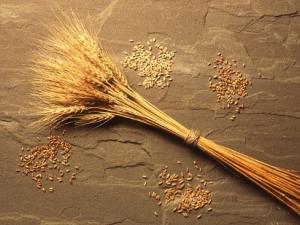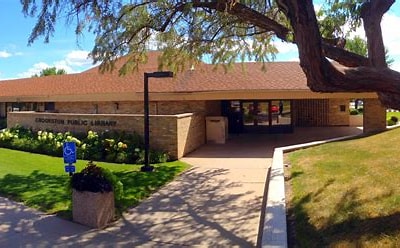Fall is almost here, and farmers are beginning the harvests of their crops that have been growing during the summer. However, thanks to the overly wet spring, wheat, and small grains farmers have found themselves a couple of weeks behind their usual projected schedule.
Jochum Wiersma, a professor in the Department of Agronomy and Plant Genetics and the Director of the Small Grains Production of the Northwest Research and Outreach Center for the University of Minnesota Extension, says that thanks to the wet conditions of the spring, farmers had to begin planting around the third week of May. However, due to the plants starting at this time and growing through the warmer summer conditions, he and many farmers were surprised to report that the crops came along much quicker than anticipated. “When you start late, the crop does develop faster simply because the summers are warmer than early springs, but we’re still behind what I would call the five-year average,” said Wiersma.
However, Wiersma reported that farmers have been pleasantly surprised with the results as the first fields around Crookston had begun their harvest last week, and others had begun earlier this week with the yields that have been harvested from these first fields. “Yield potential, generally the rule of thumb is that we probably lost the first 20% of the top, maybe even a third,” Wiersma explained. “We had beautiful weather for small grains at least through June, then it got hot and humid, and that tends not to bode well for yield potential. I don’t know where it’s pulling this from, but it’s looking like a really nice spring week crop.” Wiersma also said that despite the risk models of the grains during the heading and flowering of some of the small grains’ crops were showing a higher risk of DON (Deoxynivalenol, a mycotoxin produced by the fungus Fusarium that causes scabs and head blight (FHB) on grains), there are low concerns about them affecting the crops. Wiersma believes that if the weather stays nice and the sun stays high in the sky, farmers will begin harvesting many acres of wheat and barley within the next week to week and a half. While the Experiment Station has not started its harvest yet, other areas around the station, such as farms around Fisher, areas south of Crookston, and Fargo, have begun harvesting a few quarters of their fields earlier this week.
While Wiersma has said the crops have grown better than expected, there are some concerns the station has that may become a major issue for farmers in the future. One of those is that the station has seen an uptick in wheat stem sawflies (Cephidae), and Wiersma said that he has already received reports about the area where they can be readily found in has spread up as far as the Canadian border. Wiersma says that while the numbers in the area aren’t high enough to see the same problems of fields and crops falling over that Montana, Alberta, and western North Dakota regularly see, but is concerned to see that the numbers are rising. Another concern Wiersma has is that over the past week and a half, he has received reports of farmers finding Hessian fly damage on their crops. While it hasn’t been an economic problem in the past, Wiersma requests for farmers to call him if they see leaning stems in their fields and find damage from the flies to help figure out how widespread the issue is.
While some areas have begun their harvests of Small Grains already, the harvest for the Experiment Station and other farmers around the area will be very dependent on the upcoming weather as to when they will start. “We start harvest in the next week and a half. A lot of it will come off. Unfortunately for the growers, they’ll be doing wheat and sugar beets simultaneously because their harvest has started, so they’re very busy. After we harvest the grain, we’ll do some fall silage,” said Wiersma. “That’s dry right now, and a lot of the ground is pretty dry, especially on the surface. So, it’s a good question in whether or not we’re going to do a lot of silage because it’s dry or if we’re going to hold off until we have maybe a couple of rain showers.” Wiersma also noted that soybeans have also begun to change colors to yellow, which may cause farmers to begin harvesting soybeans while some wheat is standing. Wiersma also wants to remind everyone that harvest trucks will begin to be around much more and to be careful of the large trucks and tractors traveling along the roads to prevent accidents.
If you are a farmer that has anything to report about your crops, especially any damage done by wheat stem sawflies and Hessian flies, please call University of Minnesota Extension Small Grains Production Director Jochum Wiersma at 218-281-8629 to report the damage to your crops.





